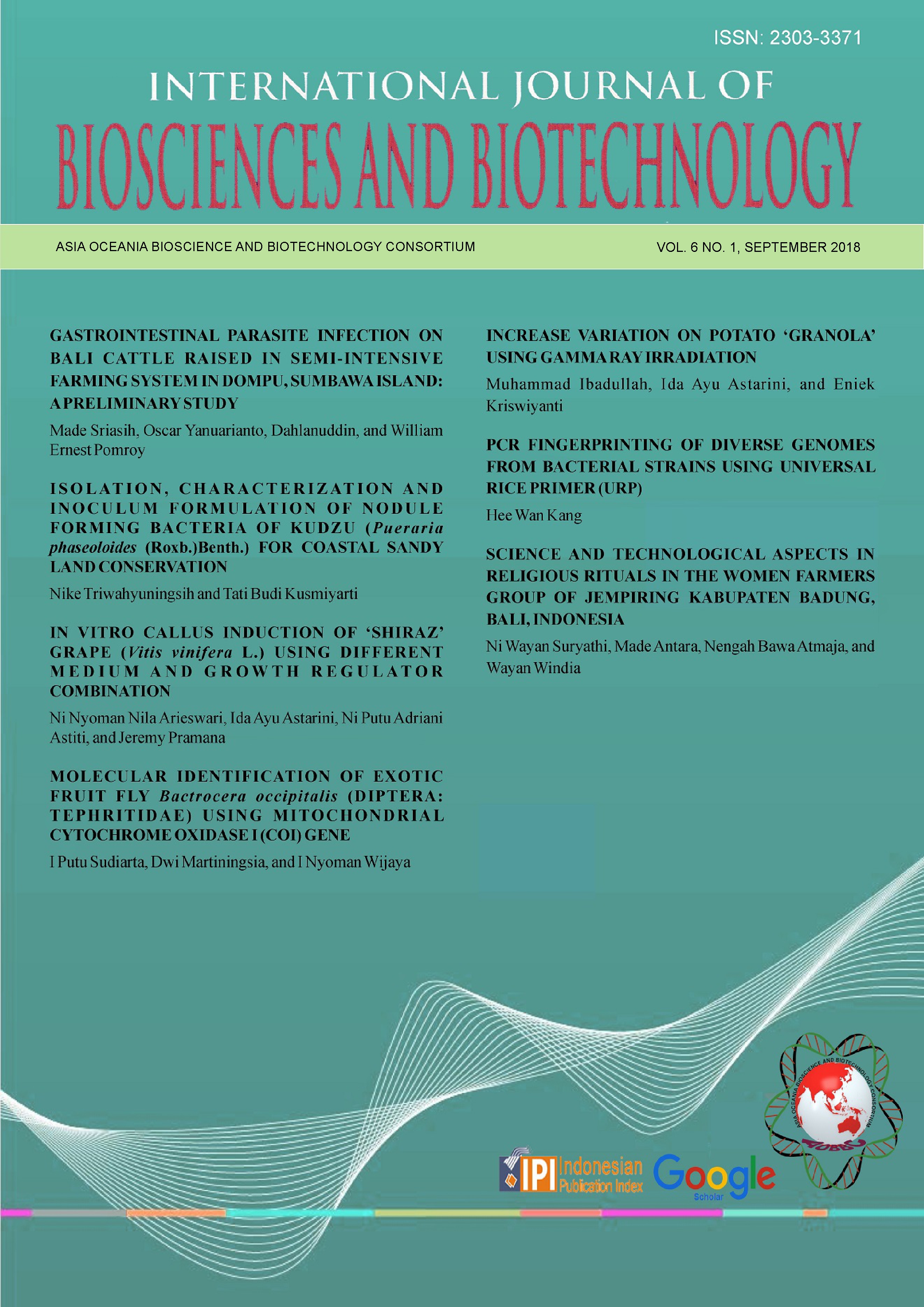GASTROINTESTINAL PARASITE INFECTION ON BALI CATTLE RAISED IN SEMI-INTENSIVE FARMING SYSTEM IN DOMPU, SUMBAWA ISLAND: A PRELIMINARY STUDY
Abstract
To date, there are very few studies have been carried out on the effect of parasite infection on Bali cattle, and more importantly, there is no published data on the epidemiology of worm infections on Bali cattle in the island of Sumbawa, Indonesia. This research aimed to undertake a preliminary study on gastrointestinal (GI) parasitic infection on Bali cattle raised under semi-intensive farming system in five different sites in district of Dompu, Sumbawa island. Fecal samples of 76 Bali cattle, from three farmer groups namely site number 1, 4 and 5, were collected, processed and examined under a microscope, with 100x magnification, for egg fecal counting or oocyst fecal counting using the modified McMaster technique. The number of eggs/oocysts observed was then determined and identified. The results show that the eggs/oocysts ranged from 50-14800. The types of GI parasites identified were Strongyloides sp, Strongyle sp, Toxocara sp, Trichuris sp, and Coccidia. Coccidia oocyst is a type of parasite which was found with the highest percentage of 23.68% followed by Strongyle sp. (18.42%) and Toxocara sp. (10.52%). The overall prevalence of GI parasitic infection in cattle accounted for 43.42%. Young calves (0-3 months old) was more susceptible to GI parasitic infection among other age groups. This preliminary data could be used as a basic data on gastrointestinal parasitic infection in Dompu district. These results may also indicate the need to develop control strategies aiming at lowering the gastrointestinal parasitism.






